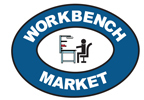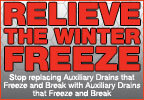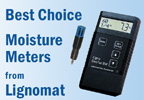CIRI White Paper Supports Role of Clean & Disinfect |
|
| Contributed by BSM Staff | |
GRANVILLE, OH-- In its ongoing effort to provide the latest research related to the science of cleaning and restoration of the built environment, the Cleaning Industry Research Institute (CIRI) has made available its new white paper, “Contact Transmission of Infectious Disease Agents: The Science and Implications for Cleaning and Disinfection of Surfaces.” Authored by academic researchers on CIRI’s Science Advisory Council, this complimentary resource provides a comprehensive, evidence-based overview of how microbials behave on hard surfaces and the subsequent ability to infect people. With data related to microbe survivability, common modes of transmission, the impact of cleaning and disinfection interventions, paired prevention strategies and cleaning and disinfection frequency recommendations, the paper offers key research supporting the role of cleaning and disinfection to mitigate the spread of viral transmission. “From the beginning of the pandemic, CIRI’s Science Advisory Council has called for a layered approach to combat the spread of SARS-COV-2, the virus that causes COVID-19,” said John Downey, Executive Director. “This white paper presents an overwhelming amount of research supporting the continued use of cleaning and disinfection interventions to mitigate the spread of infectious diseases, including SARS-COV-2. That said, it’s important to distinguish between health-based cleaning strategies and some of the broadcast disinfection efforts we’ve seen in response to the pandemic. “Recently, the CDC and others have deemphasized the importance of surface cleaning as it relates to COVID. To some extent this is a welcome correction, as it is based on the facts as we understand them: the primary route of infection is through inhalation,” added Downey. Citing more than 30 published research works, the white paper offers the following key insights: “It should be kept in mind that environments are literally fluid, with air being the fluid,” added Downey. “And research has shown that what is in the air will go to surfaces and what is on surfaces — especially viruses, which are incredibly small and light — will go to the air. The solution isn’t to clean the air and forget about surfaces, any more than it is to clean surfaces and forget about the air. The solution is a combination of both.” Click here to download the white paper: https://www.ciriscience.org/Health-Based-Cleaning-and-Disinfection.php. Guidance in this white paper serves as a supplement to CIRI’s “Guidance for Decontamination of the Built Environment: Cleaning, Disinfection, Worker Protection, and Post Cleaning and Remediation Assessment,” published last May and updated in December. For more information about CIRI, please visit www.ciriscience.org. |
|











